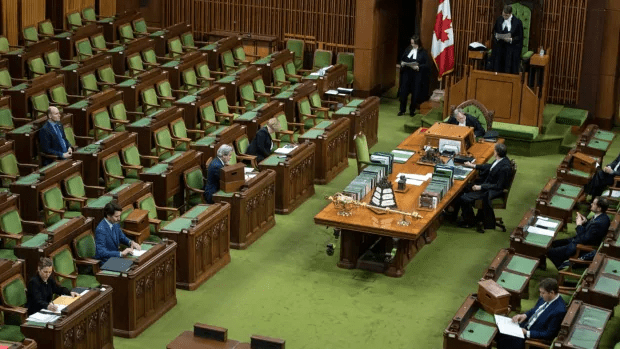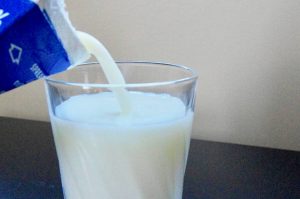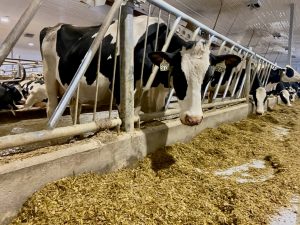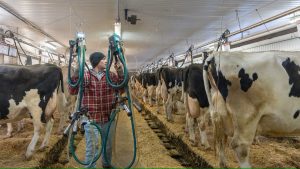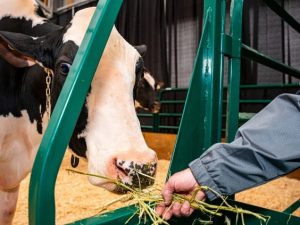
The House of Commons reconvenes today to debate legislation to permanently increase the Canadian Dairy Commission’s (CDC) borrowing limit to half a billion dollars.
The Crown corporation intends to purchase more surplus butter and cheese to help farmers and processors weather the COVID-19 pandemic.
On May 5, Prime Minister Justin Trudeau and Agriculture and Agri-Food Minister Marie-Claude Bibeau announced a new assistance package for the farm sector, which included adding another $200 million to the CDC’s current $300 million borrowing capacity.
The borrowing limit for the Crown corporation is set out in legislation that hasn’t been changed for twenty years, CDC spokesperson Chantal Paul told CBC News.
The bill up for debate Wednesday afternoon in the Commons will amend the Canadian Dairy Commission Act, allowing the government to use the Crown corporation’s buying power to mitigate unpredictable shifts in domestic milk supply and demand.
This change would take effect in the dairy industry’s current operating year, which ends July 31, 2020.
CBC.ca will carry the House of Commons proceedings live starting at 12 p.m. ET.
Adding cheese purchases
The CDC uses its existing borrowing capacity in two ways. In partnership with a private lender, it deploys $50 million of this credit to allow farmers from across Canada to pool their revenues. The remaining $250 million of its current borrowing limit has been available for bulk purchases of surplus butter stocks.
When dairy processors have more butter than the market requires at a given time, CDC makes bulk purchases that allow the surplus product to be stored until demand increases and it can be re-sold back into the market.
The Crown corporation does not automatically use all its capacity every year. The total amount of its annual purchases is subject to Treasury Board approval.
In a typical year, butter is purchased in the spring, when milk production from Canada’s dairy herds can exceed consumer demand. The CDC then sells it back to dairy processors for sale in the fall, when consumption rises — especially in the lead-up to the Christmas baking season.
Pandemic caused collapse in demand
The amount of butter the CDC purchases has increased over the last five years. Because the market price for butter has also gone up over time, more financing is now required to purchase those higher volumes, Paul said.
Now, the government is moving to expand its existing butter storage program to include cheese.
With restaurants and other institutional food services closed, the Canadian dairy industry has been reeling from the collapse in demand for certain dairy products this spring. That has forced producers in some regions, such as Eastern Ontario, to dump milk that could no longer be used.
The CDC will now be able to sign contracts with cheesemakers who currently are not operating at full capacity to transform future milk surpluses into cheese, which is easier to store. In addition to preventing waste, the bulk purchases also help with the processors’ cash flow issues until the market stabilizes again.
Industry proposed expansion
Mathieu Frigon, president and CEO of the Dairy Processors Association of Canada, told CBC News that farmers and processors asked the government to make this change last month after being forced to dump milk.
He said that the total value of this borrowing limit does not represent a new annual expense on the federal books. With interest rates at record lows, taxpayers pay only the relatively small cost of financing the storage of this butter and cheese until the stocks are re-sold.
“Never have we seen such fluctuation in demand for milk from one week to another,” Pierre Lampron, the president of the Dairy Farmers of Canada, said last week when the farm aid package was announced. “Despite the best efforts to manage production to align with consumer needs, bottlenecks resulted in milk having to be disposed at the farm, something no dairy farmer wants to see.”
While the industry is pleased to get this help, anxiety remains over what else this summer has in store for the dairy sector.
The timing of the implementation of the revised North American trade agreement, now set for July 1, does not align with the dairy industry’s fiscal year, which begins on August 1.
The export limits on certain Canadian dairy products (such as skim milk), and the new tariff-free market access provided to (chiefly American) dairy products, phase in gradually over several years.
The Canada Day start for the new NAFTA means that for the dairy sector, the first “year” of the agreement will be only one month long, before the concessions ramp up further for the second (full) year the deal’s implementation.
NAFTA compensation still up in air
Dairy industry officials have estimated that the earlier date costs the sector tens of millions of dollars at least, on top of the sizeable concessions for which they were already bracing.
Talks to negotiate a compensation package for supply-managed agriculture sectors that are losing domestic market share under the new trade deal have stalled, as both the government and the industry scramble to manage the pandemic.
CBC News asked Bibeau last week when the sector’s NAFTA compensation package would be ready, now that the implementation date has been set in a way that adds to its harm.
Bibeau pointed out that the first compensation payments for losses resulting from the European Union and Pacific Rim trade deals arrived last winter — but those payments were not calculated to cover the future losses under the new NAFTA.
“Now we are focusing on the support we have to provide to counter the effect of COVID-19,” the minister said. “But our commitment towards the dairy sector and the poultry and egg sectors as well is very strong, and we will be moving forward later on.”
